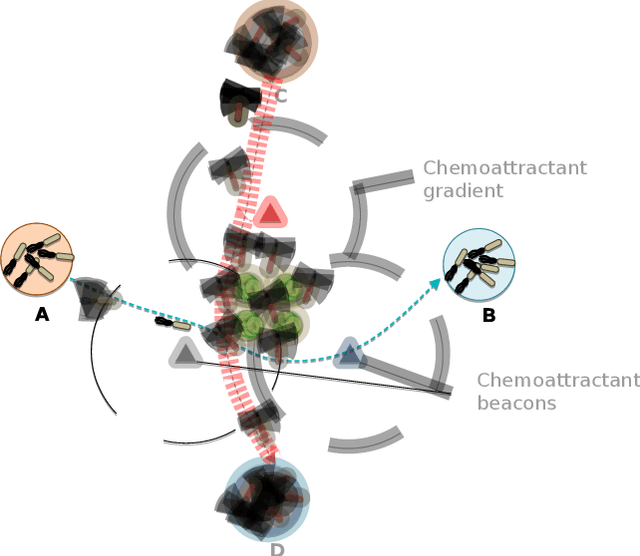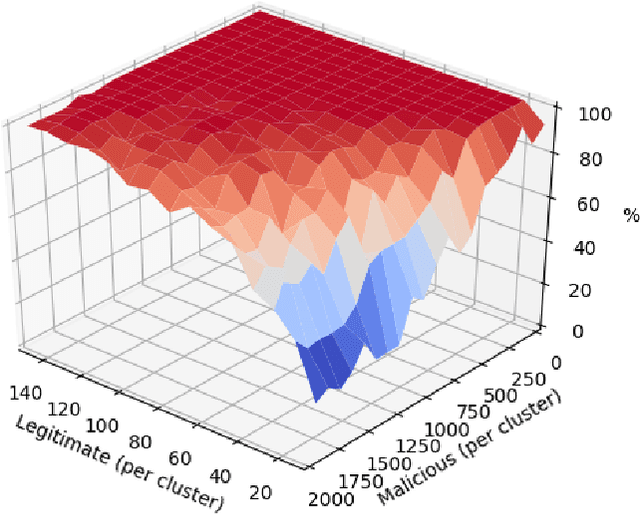Alberto Giaretta
Large Language Models and Code Security: A Systematic Literature Review
Dec 19, 2024Abstract:Large Language Models (LLMs) have emerged as powerful tools for automating various programming tasks, including security-related ones, such as detecting and fixing vulnerabilities. Despite their promising capabilities, when required to produce or modify pre-existing code, LLMs could introduce vulnerabilities unbeknown to the programmer. When analyzing code, they could miss clear vulnerabilities or signal nonexistent ones. In this Systematic Literature Review (SLR), we aim to investigate both the security benefits and potential drawbacks of using LLMs for a variety of code-related tasks. In particular, first we focus on the types of vulnerabilities that could be introduced by LLMs, when used for producing code. Second, we analyze the capabilities of LLMs to detect and fix vulnerabilities, in any given code, and how the prompting strategy of choice impacts their performance in these two tasks. Last, we provide an in-depth analysis on how data poisoning attacks on LLMs can impact performance in the aforementioned tasks.
Cybersecurity and Embodiment Integrity for Modern Robots: A Conceptual Framework
Jan 15, 2024Abstract:Modern robots are stepping away from monolithic entities built using ad-hoc sensors and actuators, due to new technologies and communication paradigms, such as the Internet of Things (IoT) and the Robotic Operating System (ROS). Using such paradigms, robots can be built by acquiring heterogeneous standard devices and putting them in communication with each other. This approach brings high degrees of modularity, but it also yields uncertainty of providing cybersecurity assurances, and guarantees on the integrity of the embodiment. In this paper, we first illustrate how cyberattacks on different devices can have radically different consequences on the robot's ability to complete its tasks and preserve its embodiment. We also claim that modern robots should have self-awareness for what it concerns such aspects, and formulate the different characteristics that robots should integrate for doing so. Then, we show that achieving these propositions requires that robots possess at least three properties that conceptually link devices and tasks. Last, we reflect on how these three properties could be achieved in a larger conceptual framework.
Kernel-based function learning in dynamic and non stationary environments
Oct 04, 2023Abstract:One central theme in machine learning is function estimation from sparse and noisy data. An example is supervised learning where the elements of the training set are couples, each containing an input location and an output response. In the last decades, a substantial amount of work has been devoted to design estimators for the unknown function and to study their convergence to the optimal predictor, also characterizing the learning rate. These results typically rely on stationary assumptions where input locations are drawn from a probability distribution that does not change in time. In this work, we consider kernel-based ridge regression and derive convergence conditions under non stationary distributions, addressing also cases where stochastic adaption may happen infinitely often. This includes the important exploration-exploitation problems where e.g. a set of agents/robots has to monitor an environment to reconstruct a sensorial field and their movements rules are continuously updated on the basis of the acquired knowledge on the field and/or the surrounding environment.
A Machine Learning-based Approach to Detect Threats in Bio-Cyber DNA Storage Systems
Sep 28, 2020



Abstract:Data storage is one of the main computing issues of this century. Not only storage devices are converging to strict physical limits, but also the amount of data generated by users is growing at an unbelievable rate. To face these challenges, data centres grew constantly over the past decades. However, this growth comes with a price, particularly from the environmental point of view. Among various promising media, DNA is one of the most fascinating candidate. In our previous work, we have proposed an automated archival architecture which uses bioengineered bacteria to store and retrieve data, previously encoded into DNA. This storage technique is one example of how biological media can deliver power-efficient storing solutions. The similarities between these biological media and classical ones can also be a drawback, as malicious parties might replicate traditional attacks on the former archival system, using biological instruments and techniques. In this paper, first we analyse the main characteristics of our storage system and the different types of attacks that could be executed on it. Then, aiming at identifying on-going attacks, we propose and evaluate detection techniques, which rely on traditional metrics and machine learning algorithms. We identify and adapt two suitable metrics for this purpose, namely generalized entropy and information distance. Moreover, our trained models achieve an AUROC over 0.99 and AUPRC over 0.91.
 Add to Chrome
Add to Chrome Add to Firefox
Add to Firefox Add to Edge
Add to Edge